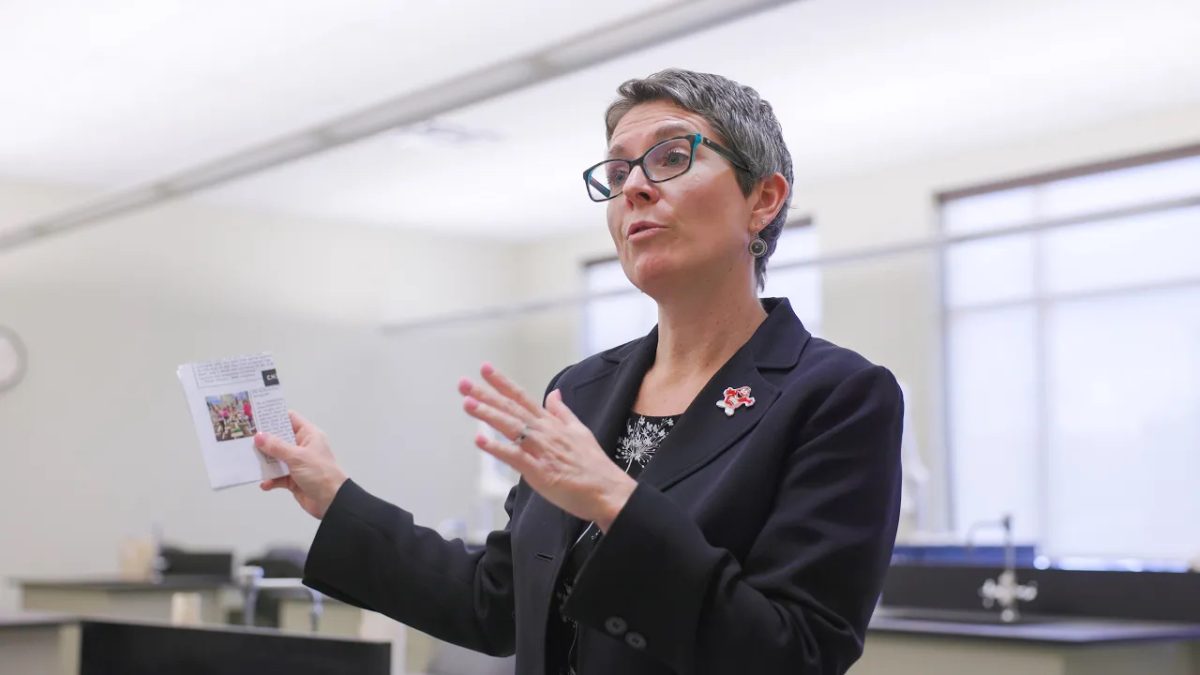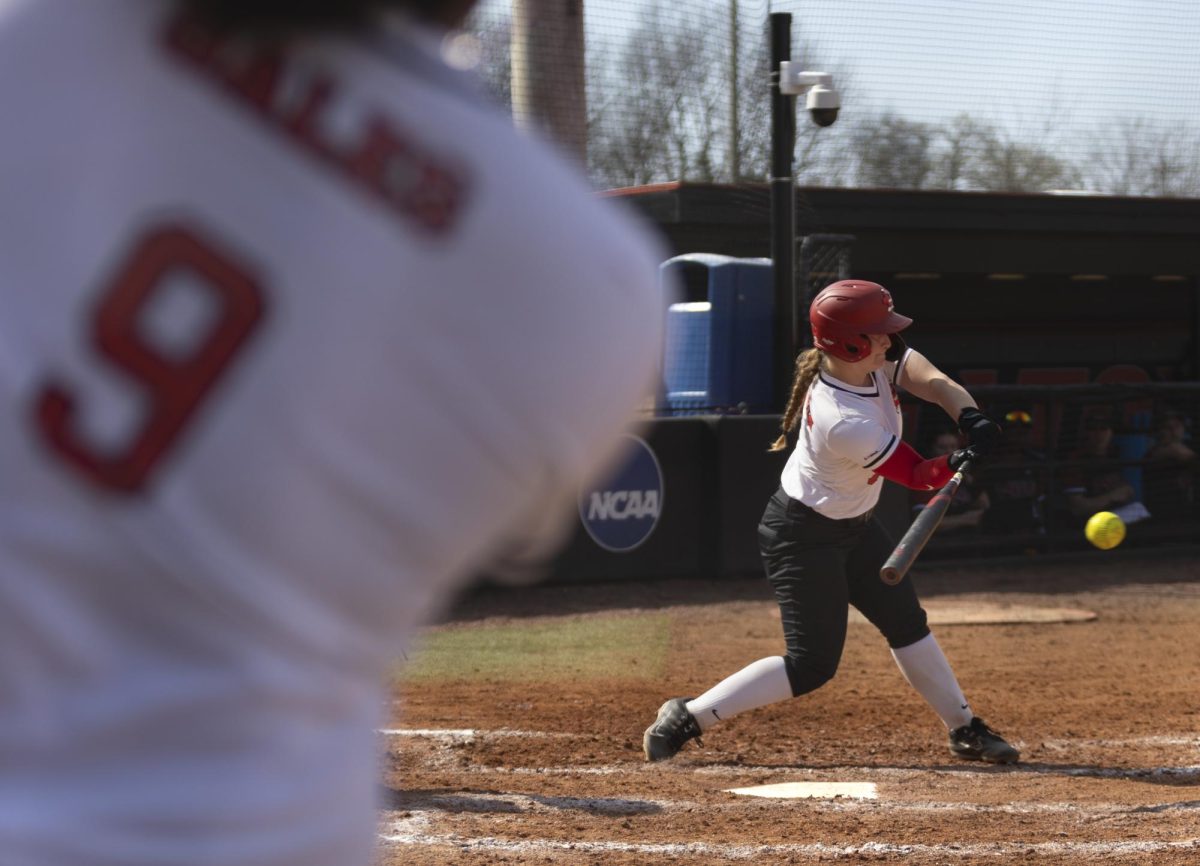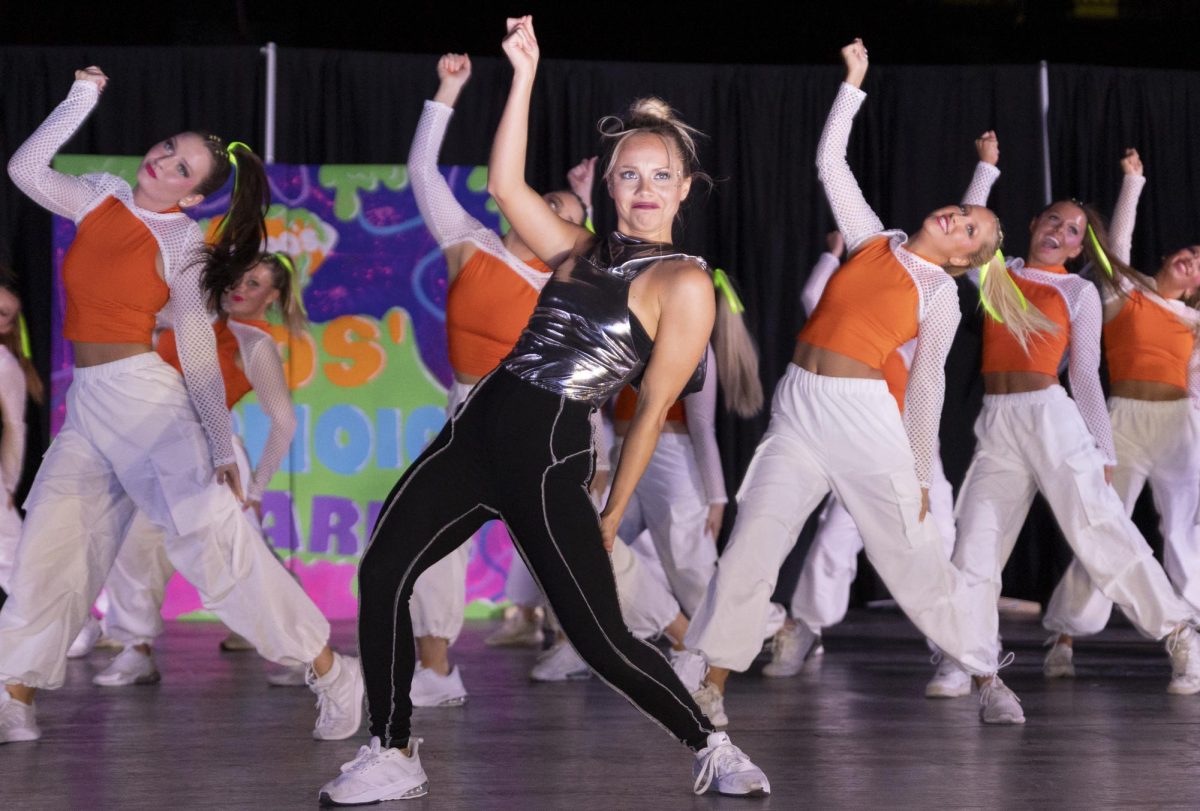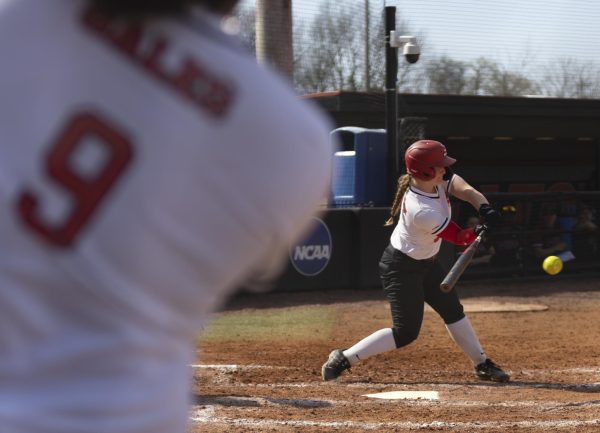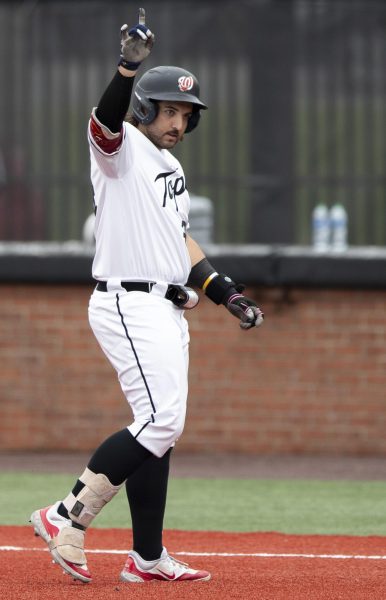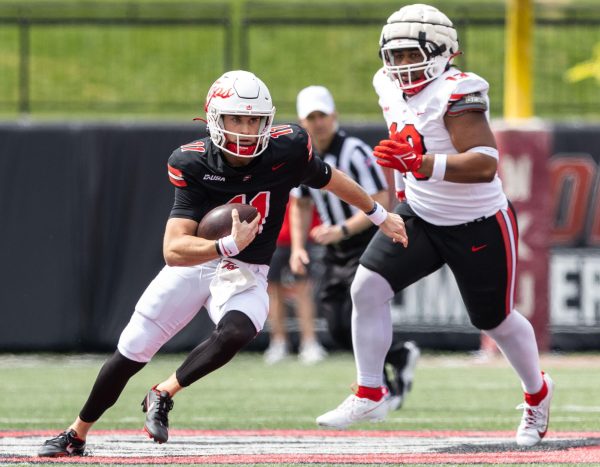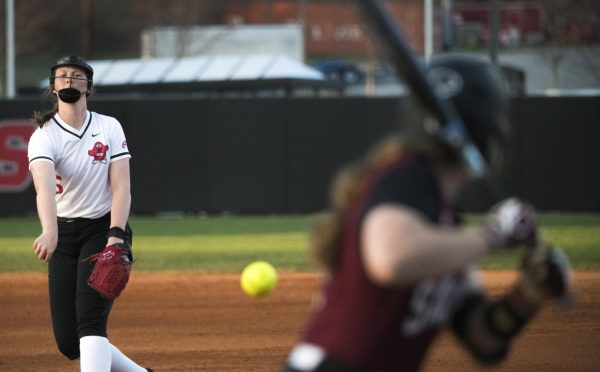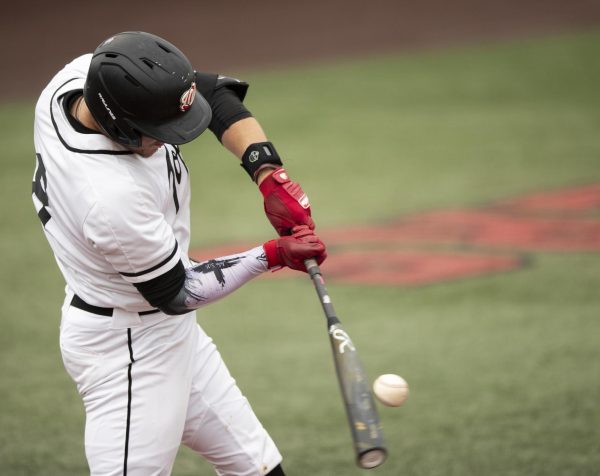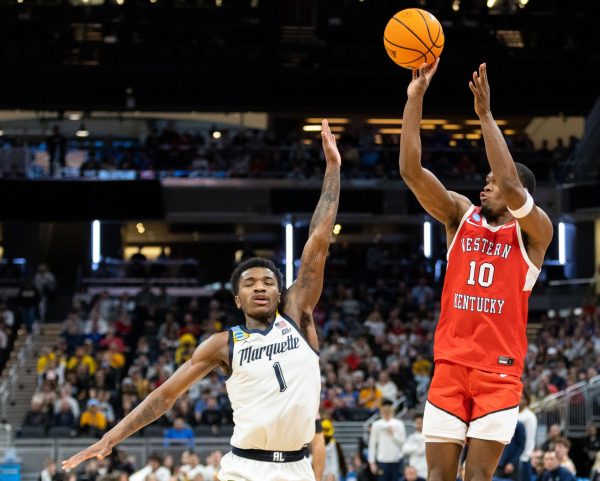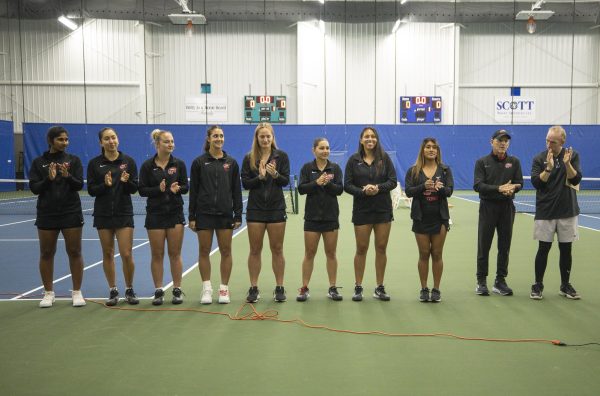Another Crushing Loss
November 5, 2002
The silence haunts Kyra Elzy.
She remembers Feb. 1, 1998, for an absence of sound – the eerie moment in Thompson Bowling Arena when you could hear a pin drop, or a knee pop.
It was the day Elzy tore the anterior cruciate ligament in her right knee, drastically altering her college basketball career at Tennessee.
More than 20,000 fans hushed as one of their star players fell to the floor during a conference game against Alabama.
Elzy screamed.
She met the three most terrifying letters in sports – ACL.
Her knee was gone.
“I can remember it like it was yesterday,” said Elzy, now a Lady Topper assistant coach. “I knew it before I hit the floor. My kneecap was in the back of my knee, and when they moved it, it just flopped like a piece of jelly.
“I was voted best lungs in the Southeastern Conference.”
The Oldham County native underwent surgery to repair the damage, only to tear the same ligament the next year.
She recovered and went on to finish a five-year stint at Tennessee, winning two national championships.
She was supposed to bring the thrill of victory to Western as an assistant to Mary Taylor Cowles. But Elzy finds herself increasingly called upon to help other Lady Toppers deal with their own ACL demons of past and present.
She has become a counselor for some, understanding the confusion and angst that one pesky ligament can create.
Ailing Toppers
Four Lady Toppers have torn an ACL in recent years: Elisha Ford, Kristina Covington, Tiffiany Diggins and now Camryn Whitaker.
Whitaker fell to the injury on Sept. 11.
She was playing a pickup game with teammates in Preston Health and Activities Center. She broke free, ahead of the pack, and made a cut to the basket, but her knee went in another direction.
An MRI the next day revealed Whitaker had torn the ACL in her right leg, along with the lateral and menial meniscus.
Surgery was successful, but the guard had to lose most of the cartilage that keeps the bones in her knee from touching.
She lost this season, as well.
“They say I should make a full recovery,” Whitaker said. “But I know that I’m going to be in a lot of pain when I’m playing.
“This is probably the hardest thing I’ve ever had to do. But things happen for a reason. I may not know what it is right now, but hopefully it will make me a better person.”
Luckily, Whitaker isn’t alone in her struggle.
She has shoulders to cry on and people who can help.
Understanding
The Lady Toppers have to move on in Whitaker’s absence. Cowles lost her starting point guard but knows there’s no need to dwell on the past.
“She’s out, and we have to make the best of it and move forward,” Cowles said. “I think Camryn’s best two years of college basketball are truly ahead of her. Sometimes when something is taken away from us that is very important, we realize just how much we love that something.”
Most of the Lady Toppers who have experienced an ACL tear feel the same way. They are getting past their injuries but take time out to help wipe away Whitaker’s tears.
“I’ve talked to Camryn,” Elzy said. “I told her she’s going to have her good days and her bad days. I think she’s still in shock. It won’t hit home until Nov. 23 when her teammates come out of the locker room and she comes out on crutches.”
Whitaker moves slowly around practice. Her crutches don’t carry her far, but she makes sure to get in on every facet of the game.
Occasionally, she gets a far-off look in her eye. It’s clear she’s thinking.
“The first day I walked into practice, I bawled my eyes out,” she said. “I never missed a game. I’ve never missed a practice. It’s hard for me. I lost something that I love to do. I just lie in bed and pray that I will make a full recovery.”
Others know the pain.
They help, but they hurt a little themselves when they look up and see Whitaker, their court leader, sitting on a table off the court.
“She talks to us,” Ford said. “She sits and watches what we do, especially with the guards. She gives me a lot of support because I could be playing her position. She tries to give me hints because she’s more of a leader at point guard than I’ve ever been.”
Why?
Women get more ACL tears than men. Exact reasons are unclear. Statistics are still coming in.
According to a report from the American Academy of Orthopedic Surgeons, women in sports such as basketball are three to four times more likely to injure their ACL than men.
Paula Upright, head trainer for the Lady Toppers, said the search for answers is heating up.
“It’s one of the hottest topics in sports medicine, especially on the women’s side,” Upright said.
The ACL is at the front of the knee. It crosses with the posterior cruciate ligament to act as a stabilizer.
Without the tandem of ligaments, the knee would move too much and slip off the tibia, the thicker of the two bones in the lower leg, also known as the shinbone.
Upright said an ACL injury can occur when there is a quick change of direction or hard contact. For women, however, the injury is mostly “non-contact.”
The “Q-Angle” – the angle created by the bones between the hips and knee – could be the problem, Upright said. Women have wider hips, and the resulting angle places more pressure on the knee.
Also, she said, because hormones increase during the first days of a woman’s menstrual cycle and the days leading up to it, a player could be more vulnerable to injury.
Researchers are beginning to take saliva samples at the time of injury to determine the amount of hormones in the body.
But according to Upright, not much can be done in terms of prevention.
“You just have to hope that the muscle is strong,” she said.
Jumping programs are being instituted at some colleges. Upright noted that teaching women how to land correctly could keep their knees out of danger.
The debatable and unpredictable nature of female ACL injuries doesn’t fully console those affected.
“It was frustrating for me because it was my freshman year,” Ford said of her ACL tear. “I was a walk-on trying to prove something. It was like the second practice after the first game. I don’t know if I might tear one again, but I don’t think about it.”
Surgery and rehab
The injury is hard enough. But ask any afflicted Lady Topper and you get the same answer: Rehab is worse.
“I think tearing my ACL was the hardest thing I’ve ever gone through, besides a death in my family,” said Covington, a senior guard for Western.
Covington laughed as she methodically recited the date of her tear, surgery and clearance to take the court again. It’s like the start of a war or a presidential assassination – you never forget the when, where and how. You can’t forget.
For Covington, it was the first game of her sophomore season in 1999. The Lady Toppers were playing Indiana. She wasn’t cleared to play again until the following July, after months of intensive rehab.
“It makes you realize how much you love the game,” she said. “Plenty of times I wanted to quit. Tearing the ACL isn’t as bad as the rehab – everyday coming in and giving it all you got.”
Upright said someone with a torn ACL usually is not up to speed for six months. It can be a year before they “feel like themselves again.”
Conversely, surgery to repair the tear can be done in about the time it takes to play a basketball game.
According to Don Pomeroy, an orthopedic surgeon in Louisville, a simple ACL tear can be fixed in about two hours.
Replacing the meniscus or other damage could take longer.
“You have to substitute the ligament,” Pomeroy said. “There’s usually another tendon used from either the same leg or somewhere else in the body. Frequently it comes from a donor.”
Pomeroy added that a torn ligament can only rarely be reattached. It must be replaced.
It is extremely uncommon to have just an ACL tear, he said. A meniscus tear usually occurs as well, which was the case with Whitaker.
She will stay off her feet for about two more weeks. In an effort to strengthen the muscles around her knee, Whitaker was recently cleared to swim.
Swimming is a normal progression for athletes after an ACL injury. Upright said she and the other trainers follow a rehab protocol that frequently changes, depending on the person.
Rebuilding hamstring strength is the key, and it can take months of repetitive bike-riding, weight-lifting and agony.
“When I tore it, I gave a funeral cry,” said Diggins, a senior center. “But the rehab was the worst part. It’s an everyday thing for months. You learn how much you lose once your tear your ACL, because your leg loses all the muscle inside of it.”
It’s a physical battle with an emotional twist. Not only strength is gone, but seasons are lost to the three little letters. Rehab alone isn’t enough.
Elzy said a persevering positive attitude is key. And if anyone knows the secret to recovery, it’s Elzy.
It worked for her. She says it will work for her players.
“You can come back from them,” Elzy said. “It’s hard work, but once you get back, you’re fine.”










